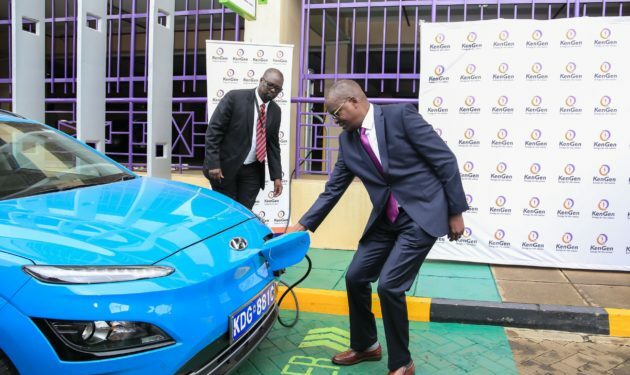Kenya Power and Lighting Company (KPLC) has announced plans to replace all 2,000 vehicles fueled by fossil fuels with electric vehicles within the next four years.
The electric distributor intends to upgrade its existing vehicles by installing electric engines. They have allocated KES 40 million to purchase three electric vehicles and construct three charging stations within Nairobi. During the E-mobility Conference, Kenya Power reassured participants from the public and private sectors that the grid network is strong enough to handle the shift from fossil fuel vehicles. Over 300 attendees gathered to draft a plan for the electrification of transportation in the nation.
In the past 5 years, Kenya Power has invested over 40 billion Kenyan shillings to upgrade and expand its electrical grid. The grid now spans 300,000 km in circuit length and serves over 9.1 million customers, reaching 75% of the nation’s population in all 47 counties. The country has a total installed capacity of 3,321 MW with a peak demand of 2,132 MW, dropping to 1,100 MW during off-peak hours. In the last 3 years, 90% of the electricity supplied to the grid came from renewable sources such as hydro, geothermal, solar, and wind, reaching 100% during most off-peak nighttime hours.
The Company has consistently invested heavily towards expanding the grid’s capacity and its automation to accommodate the exponential growth in demand for electricity and improve the grid’s flexibility and, in turn, the quality of the power supply.
Kenya Power’s Ag. Managing Director – Eng. Geoffrey Muli
The company believes that charging electric vehicles at night would help balance off-peak energy demand and capacity, as well as raise the overall average demand above 1,500 MW, making e-mobility more eco-friendly. To meet the needs of the e-mobility sector and provide top-notch service, Kenya Power has been involved in various e-mobility projects and partnerships with local and international partners.
We have established a liaison office which acts as our one-stop shop to champion the Company’s emobility business. Through this office, we are working with investors and stakeholders to support the development of the e-mobility ecosystem, which entails the identification of sites for potential charging stations and developing requisite geo-mapping software to enable users to locate the nearest charging station.
Kenya Power’s Ag. Managing Director – Eng. Geoffrey Muli
Over the past five years, Kenya Power has invested over KES 40 billion in grid expansion and renovation efforts. As a result, the grid now spans 300,000 kilometres in circuit length, serving over 9.1 million customers across all 47 counties and providing access to over 75% of the country’s population. With an installed capacity of 3,321MW and a peak demand of 2,132MW, the demand for electricity drops to around 1,100MW during off-peak hours, particularly late at night. During this time, approximately 90% of the electricity dispatched to the grid is produced from clean, renewable sources such as hydro, geothermal, solar, and wind, rising to 100% during most of the night off-peak.
By charging electric vehicles during off-peak hours, Kenya Power believes it can help bridge the gap between the available generation capacity and the demand while also making e-mobility more environmentally friendly. To facilitate the needs of the e-mobility sector, the company has been actively involved in e-mobility projects and initiatives with local and international partners and has established a liaison office as a one-stop shop to support the development of the e-mobility ecosystem.
Through its subsidiary, the Institute of Energy Studies and Research, Kenya Power is also undertaking a multi-stakeholder project supported by the European Union to analyze the impact of charging infrastructure on the national grid and develop strategies for managing the growth in electricity demand driven by e-mobility. The project aims to deploy 15 e-motorcycle charging and swapping points in Nairobi, with the possibility of extending it to Kisumu. The company is hiring a consultant to guide the development of an E-mobility Network Infrastructure System. To promote investment in e-mobility, the company has submitted a proposal for an e-mobility tariff to the Energy and Petroleum Regulatory Authority, which is currently undergoing public participation.
The demand for electric-powered vehicles is expected to accelerate in the coming years with increased awareness of the benefits of e-mobility. We see this as an organic opportunity for us to support the country’s green agenda and to drive electricity demand, especially at night, to bridge the gap between off-peak load and available generation capacity.
Kenya Power’s Ag. Managing Director Eng. Geoffrey Muli
Last August, the company called for Expressions of Interest (EOI) to find partners to help implement the E-Mobility Network Infrastructure System (ENIS), an electric vehicle charging system. This is expected to boost the adoption of electric mobility, which has grown globally in recent years, leading to various companies in Kenya producing related products to meet the rising demand.
Read Also: Kenya Power to Raise KES 31 Billion from Proposed Tariffs




